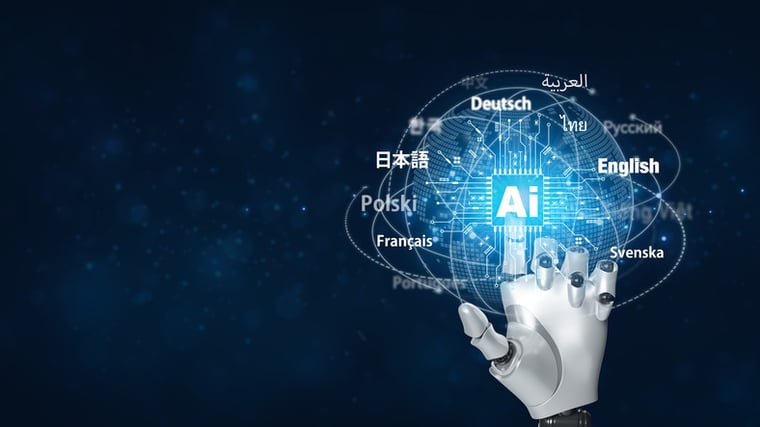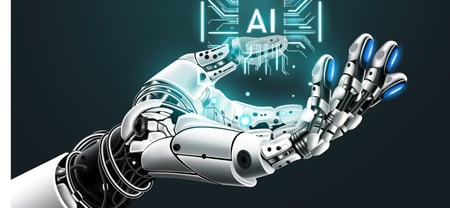The Evolution of Machine Translation: AI’s Impact on Language Services

Technology is undoubtedly at the forefront of driving progress in the translation industry. If you’ve worked on translation projects, either on the Language Service Provider (LSP) or the client side, tech will have formed a large part of the conversation. How, when and to what level it should be used to maximize budgets without sacrificing the level of translation accuracy needed for the job.
At LinguaLinx, we help our clients find the best solutions for their linguistic needs. This means having a firm grip of where tech has come from, where it’s going and its current capabilities to make the process more efficient. Because, as good as technology is, understanding how to get the most out of it still relies heavily on the right humans setting the right technological solutions.
Let’s take a look at the heart of the tech we’re talking about – Machine Translation.
What is Machine Translation?
Machine translation (MT) is exactly what it says it is: the process of using a machine (a computer) to translate text from one language to another.
Stick English in one end, and Portuguese, Spanish, German, Swahili, or whatever you ask for comes out the other.
The First 60 Years of MT
In the late 1940s the world, still reeling from the effects of the Second World War, was noticing a different conflict emerge. A Cold War brewed between East and West, where intelligence and political strategy would continue to shape the world without the use of brute force.
In order to do this, the mastery of understanding languages was critical. While translators were good, they could be influenced and had workload limitations. Naturally, with the success of machines to break codes during the war, it was only a matter of time before they were employed to translate language as well.
In 1954, Georgetown University and IBM conducted an experiment where they used a computer to translate 60 Russian sentences into English. MT was born.
It would continue to evolve over the next fifty years, albeit slowly and without being user-friendly, until the world wide web had a few years under its belt and along came the company whose actions would dictate how we used the internet – Google.
Google Translate
In 2006, Google Translate came on the scene, and it became clear that there was a simple way everyone could translate words. Yes, just words and not sentences, and often poorly, but it didn’t take too much to see how this MT tool could evolve.
With the introduction of the iPhone and subsequent smartphones to the world, people suddenly had a basic translator in the palm of their hands.
By 2014, Google had moved towards a better translation model, where sentences could be translated in a way that replicated the way the human brain works. This is called Neural Machine Translation (NMT).
Neural Machine Translation
Neural machine translation (NMT) uses neural networks to translate text from one language to another. Unlike traditional methods, which often rely on rule-based systems or phrase-based translations, NMT processes entire sentences as a whole, capturing context and nuances more effectively.
It learns to translate the text by training on large datasets, and it uses perhaps the ultimate technical achievement we’ve seen in the linguistic and many other industries so far in the 21st century…Artificial Intelligence (AI).
AI – The Game Changer
When AI came on the scene, it was clear it was going to transform the translation industry. However, it’s important to note that the role of human post-editing remains vital to the translation and localization process. This is where partnering with the right LSP is probably more crucial than ever.
They’ll suggest the level of human post-editing and, crucially, set the level of MT to best meet both your accuracy and budget requirements. The need to have this conversation with industry experts won’t change.
What has changed is how AI-powered MT has shaped the workflows of the industry over the past decade. Let’s take a look at the main ways MT has revolutionized the world of language services:
- Real-time translation — AI-powered tools enable real-time translation, allowing for seamless communication in multilingual contexts, such as during video conferences and live events.
- Increased efficiency — AI tools assist human translators by handling repetitive tasks, suggesting translations, and providing glossaries. This boosts productivity and allows translators to focus on more complex aspects of the text.
- Customization and personalization — AI learns from specific industries and client preferences, tailoring translations to fit particular terminologies and styles. This is especially useful in fields like legal, medical, and technical translation.
- Integration with other technologies — AI translation tools integrate with various platforms and software, such as content management systems and customer service chatbots, making the user experience better.
- Enhanced accessibility — AI has made translation services more accessible to smaller companies and individuals, allowing a broader range of content to reach global audiences.
- Continuous learning and improvement — AI systems continuously learn from user feedback, improving their performance over time and adapting to new language trends and slang.
What Comes Next?
MT will continue to evolve with the help of AI. It will get a deeper understanding of how we use languages to communicate. The more data it accrues, the more we can guide it to accurately help LSPs work with their clients to get into new markets, comply with regulations and connect people, communities and businesses.
This goes far beyond just translating material, but married with the human touch, localizing material and making it contextual to a specific audience or group of people.
We see the evolution of the industry as an exciting challenge. One which will only make linguistic services more widely accessible and bring anyone communicating in different languages closer together. Make no mistake about it, human involvement in the process isn’t going anywhere, it will just be more finely tuned in the translation process of the future.
Whether that’s a guiding strategy from your LSP, or a linguists detailed post-editing skills to make sure a translation is exactly what’s needed, getting the right blend of MT and human input will be the key to a successful translation as the industry continues to march forward.
Now that you’re armed with an understanding of how MT has grown from a simple experiment in 1954 to an AI-powered linguistic revolution, you can see how MT can be used to help move your business forward into new markets.
If you see uses where MT could help you, and are looking for a LSP to guide you through the process, then maybe we can help. At Lingualinx, we can help you bring your brand or products to another country, culture or community.
Consultations are free and there’s no obligation.
You’re in safe hands with us as we’re ISO 17100 and ISO 9001 compliant, have over twenty years of professional translation experience, and have earned the trust of organizations around the world.






